Samyang XP 85 mm f/1.2
3. Build quality
In the photo below the tested lens is positioned next to the Canon EF 85 mm f/1.8 USM.
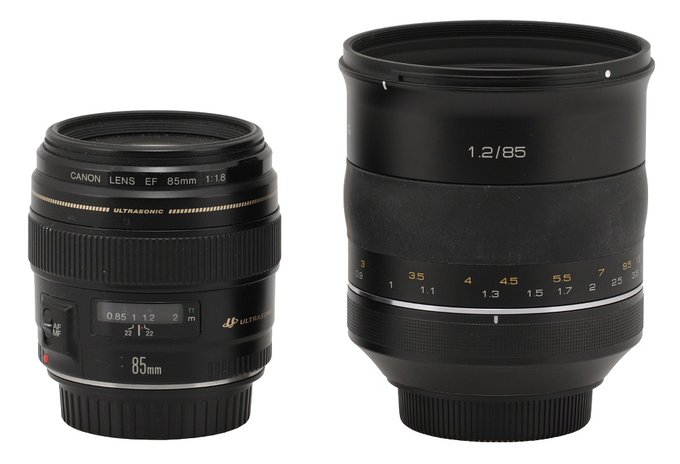 |
Please Support UsIf you enjoy our reviews and articles, and you want us to continue our work please, support our website by donating through PayPal. The funds are going to be used for paying our editorial team, renting servers, and equipping our testing studio; only that way we will be able to continue providing you interesting content for free. |
- - - - - - - - - - - - - - - - - - - - - - - - - - - - - - - - - - - - - - - - - - - - - - - -
The Samyang 85 mm f/1.2 Premium starts with a metal mount with an embedded contact plate. Finally also the Canon mount version has them, a very good piece of news. What’s important, the contacts haven’t been glued on the surface of a rear element, like in the case of the Canon 1.2/85 so the shape of cross section of the Samyang’s rear element, 36 mm in diameter, is perfectly round. The element is positioned on the same level as contacts with the focus set at infinity. When you pass to the minimum focusing distance, it hides by about 1 cm inside the casing, revealing a very nicely blackened and matted interior without any significant slits.
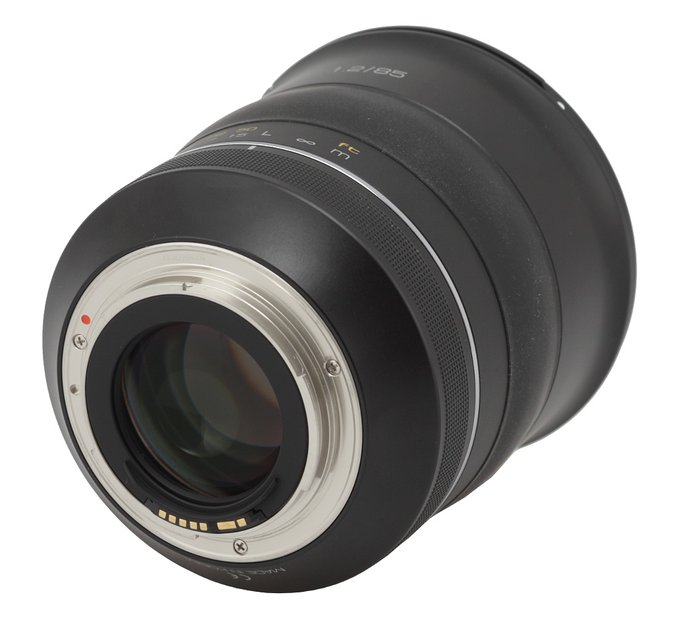 |
The proper body of the lens starts with a black, metal ring which gets wider as you progress further from the mount. The ring’s surface is covered by fine ribbing and you can find also an inscription “MADE IN KOREA” on it. There’s no aperture ring because you control the aperture from the camera’s menu level.
There’s no depth of field scale either, strange for a manual, fixed focal length lens. A fitting DOF scale is a useful tool and manual primes usually feature it.
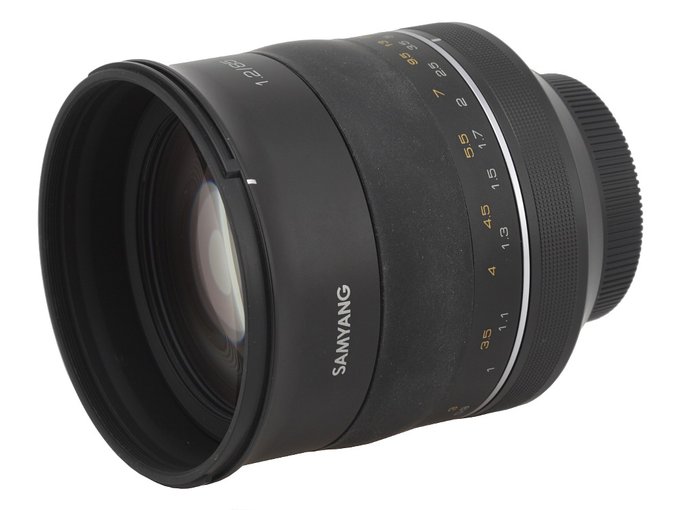 |
A narrow, silvery and immobile ring is the next part of the casing. Behind it you find another ring which can be moved – it allows you to set the focus. The ring is 36 mm wide, with one part of its surface covered by a distance scale expressed in feet and meters and the other by a rubber armour which ensures you a firmer grip. The ring looks similar to the solution known from the Otus and Milvus series produced by Zeiss; it also shares the problem of catching dust and dirt easily. Still the ring’s work seems to be beyond reproach as it moves smoothly and efficiently. Running through the whole distance scale takes a turn through an angle of almost 200 degrees. It is less than 270 degrees offered by the Mitakon 1.2/85, the Milvus and the Otus 1.4/85 and the difference is really felt. By f/1.2 even very slight moves of the ring change the depth of field in a distinct way.
Further on you see a black, metal ring which doesn’t move, with a filter diameter, 86 mm, the logo of the company and the parameters of the lens, 1.2/85 written on it. The ring turns smoothly into a hood mount.
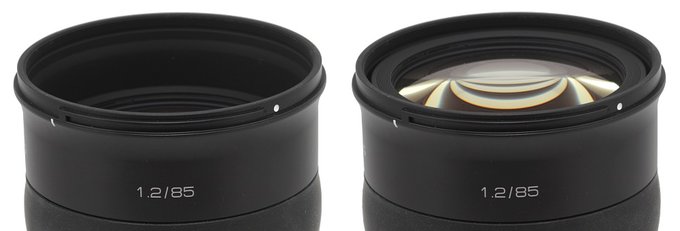 |
The front element is almost 7 cm in diameter, encircled by a non-rotating filter thread, 86 mm in diameter. The element moves – it is almost on the same level as the hood mount when you set the focus at 0.8 of a meter, it hides inside the tube about 2 cm deep when the focus is set at infinity.
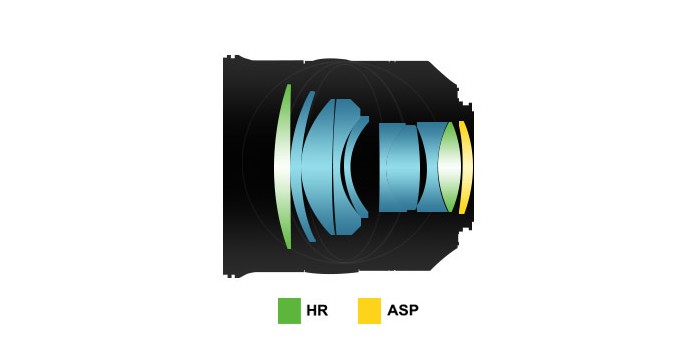 |
When it comes to the optical construction you deal here with 10 elements positioned in 7 groups. One element is aspherical and two others are made of HR glass with a high refraction index. Inside you also find a round aperture with nine blades which can be closed down to a value of f/16.
Buyers get both caps and a hood with the lens in the box.
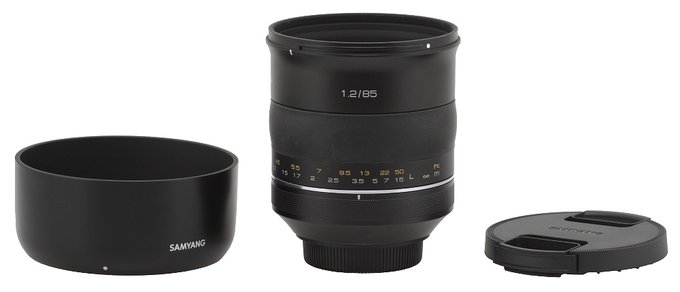 |






